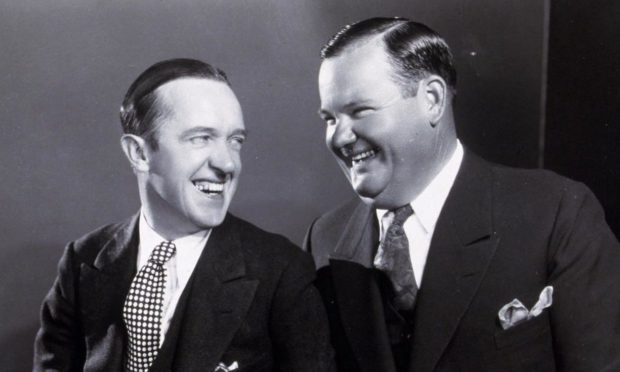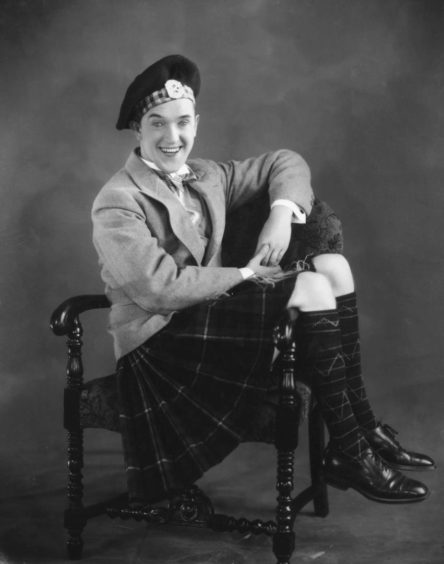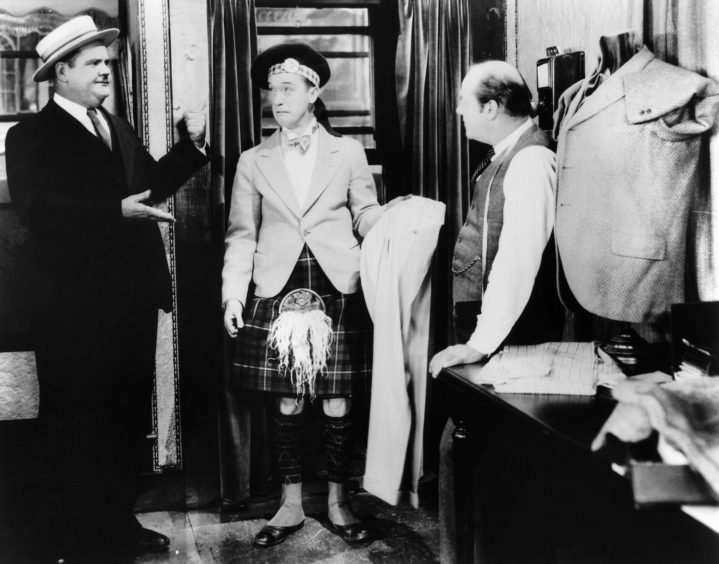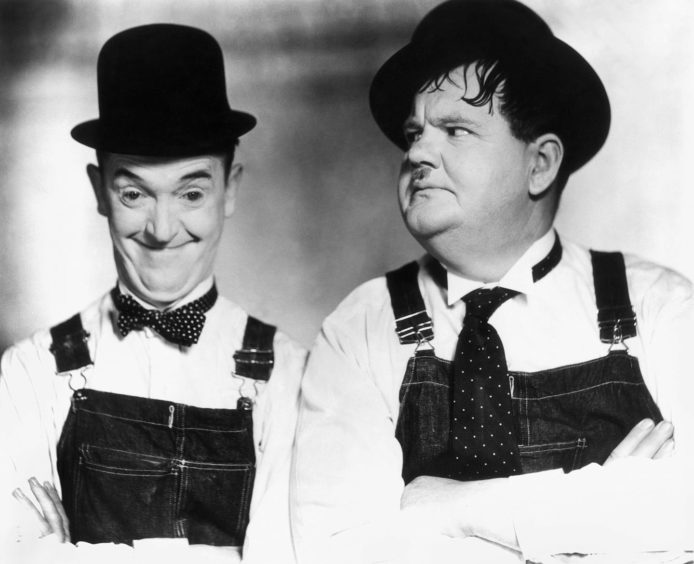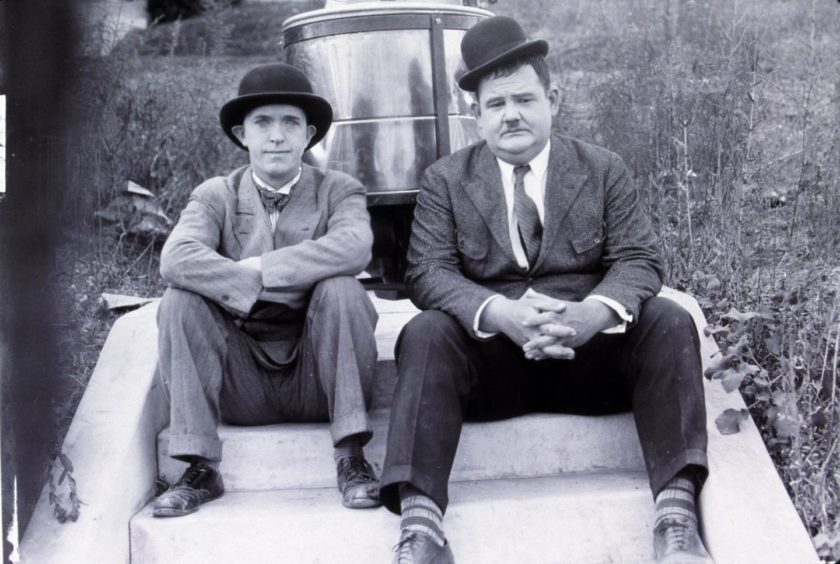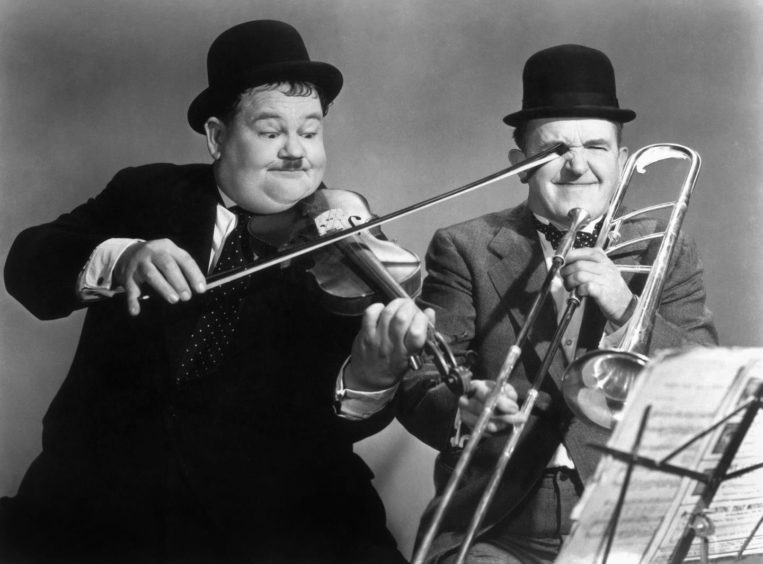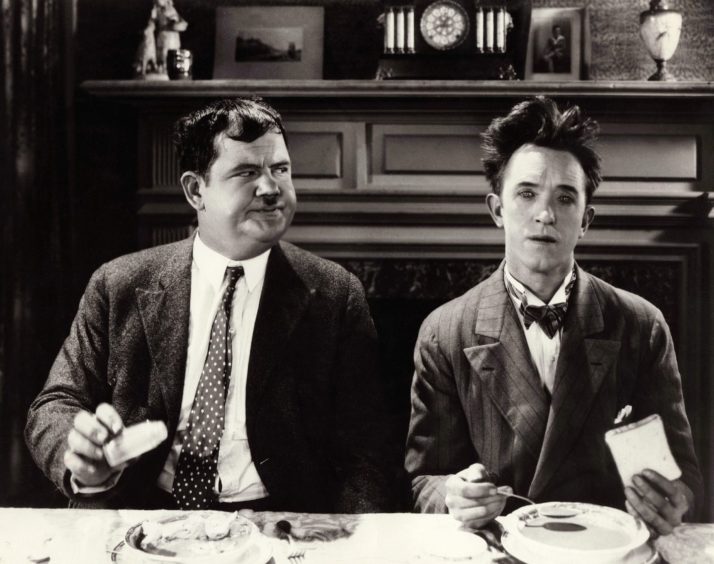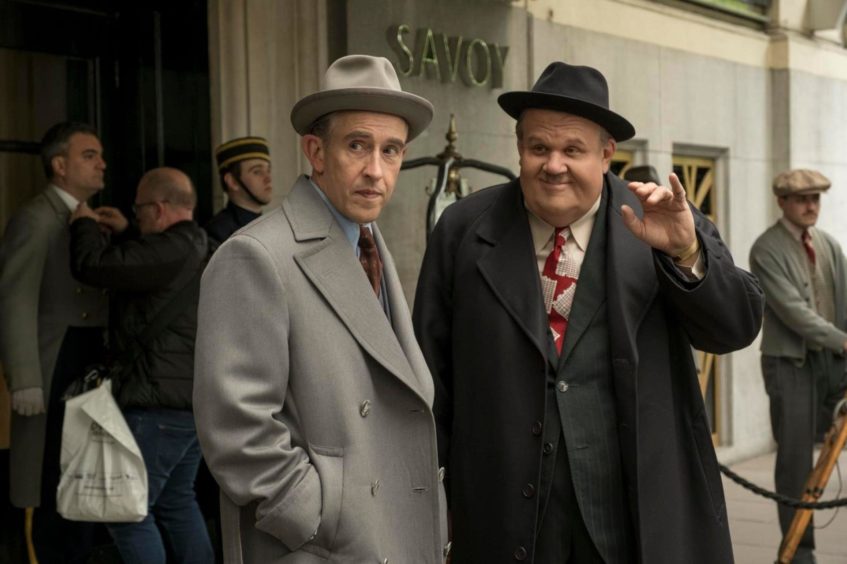The audience who turned up at the Dundee Palace in the summer of 1908 couldn’t have known they were in the presence of greatness.
And the small role in the cast for a baby-faced teenager called Stanley Jefferson wouldn’t have provided any more illumination until – almost 20 years later – that same English comic changed his name to Stan Laurel and joined forces with a genial American called Oliver Hardy.
Because, although they subsequently became the most famous double act in showbusiness history, the 18-year-old who arrived on Tayside as part of his father’s company was still learning his trade and paying his dues.
However, despite perfecting the art of playing a dim-witted, head-scratching booby in the pair’s classic Hollywood films, there were no flies on Stan who was already working with his dad, Arthur, on a comedy playlet Home for the Honeymoon – which he subsequently adapted for two L&H classics.
And his association with Scotland meant that when he and Ollie returned for a tour of the country at the height of their fame in 1932, they were involved in a near-stampede in Glasgow which could have ended in tragedy.
Laurel always had a hardy attitude to writing
Stan, who was born in Ulverston in Cumbria in 1890, had greasepaint and the stage ingrained in his DNA, with his father being a theatre manager and his mother, Margaret – who is buried in Glasgow – an actress.
From his formative years, he was interested in every aspect of the business, whether in writing scripts and devising story ideas, or learning about acting technique and such aspects of the comedy craft as timing and wordplay.
Whilst rarely credited as a writer or director, he was often the creative force behind the duo, toiling long into the night writing and editing their films, and making sure every scene would tickle ribs and split sides.
When asked a question about a gag or story line, Ollie would often point to his confrere and reply: “Ask Stan”.
He was in charge of their career decisions as well, and his relaxed, golf-loving partner with the nickname “Babe” had complete trust in his friend’s decisions.
Trips to Tayside helped Stan chase his dreams
Stan was involved in proceedings at the Dundee Palace in August 1908, in his father’s company and was enthused by the reception which he and the repertory company received from the public.
Just a few months later, shortly after Christmas, he played the Dundee King’s, in two Fred Karno Company sketches and colleagues later recalled how he worked feverishly on fine-tuning and refining his performances.
Author A J Marriot, who has investigated the life, times and myriad stage appearances of both Laurel and Hardy and Charlie Chaplin, was impressed by the resilience which the youngster displayed while participating in a gruelling cross-country schedule, embracing hundreds of different venues.
But he unveiled the strange circumstances whereby Stan originally joined into a fruitful collaboration with Ollie after relocating to the United States.
A leg of lamb sparked a call-up for Stan
Mr Marriot said: “By 1925, Laurel wasn’t even appearing in front of the camera. Despite having made over 50 films, from as far back as 1917, he had been taken on by Hal Roach purely as a writer and a gag-man.
“It was a position he was happy to be in, because, at that stage of his career, he didn’t rate himself as a film comedian.
“His interest soon spread to all aspects of film production, for which he was being rewarded by being trained as a director.
“Within a year, Stan had co-directed a handful of films, including three with Hardy, who was by under contract to Roach.
“But then, one day in June 1926, Hardy was unable to turn up for filming, having badly scalded his arm at home while he was basting a leg of lamb which he had taken from the oven.
“Roach, unable to find an immediate stand-in, decided to pitch Laurel into the role and liked his contribution so much that he gave him the go-ahead to write himself a part in the next picture.
“Hardy had recovered sufficiently to return, whereupon the two of them inadvertently appeared in the same film. And the wheels had been set in motion so swiftly that by July 1927, the screen partnership of ‘Laurel & Hardy’ was considered bankable enough for them to be launched as a major force.”
There was no looking back. Serendipity had struck and comedy gold ensued.
A whirlwind rise to success and Simpsons moment
The couple were soon creating timeless pieces of magic such as Brats, Way Out West, Oliver the Eighth, Big Business and Babes in Toyland, which are still entertaining generations almost 100 years later.
They managed to generate laughter in the depths of the Great Depression and the sight of the duo trying to push a piano up a hill in The Music Box was even interpreted in the Soviet Union as being an indictment of capitalism.
In reality, there was nothing political about it, but that brilliantly-realised short film won an Academy Award in 1932. Then, in 1997, it was selected for preservation in the National Film Registry by the Library of Congress as being “culturally, historically, or aesthetically significant.”
Stan and Ollie were obviously the key figures, but they were boosted by talented supporting actors, including Mae Busch and James Finlayson, the Scottish actor who was involved in 33 L&H films, and frequently uttered the frustrated expression “D’oh!”
Ollie first used the expression in the duo’s first sound film, Unaccustomed As We Are in 1929 when his character’s wife smashed a record over his head.
And the phrase, expressing surprise, impatience, or incredulity, eventually inspired the trademark response to adversity of one Homer Simpson.
The Scottish tour of 1932 had good and bad points
Both Stan and Ollie had complicated personal lives. And, if you doubt that, just consider this extraordinary fact: throughout his life, Stan married his first wife once, his second wife twice, and his third wife three times.
He then went back and married his second wife a third time, and concluded by marrying his fourth wife once. And Hardy’s inclination to rush to the aisle on a regular basis meant that he was forced to pay alimony often quicker than he could write the cheques from releasing new movies.
Yet, their star was in the ascendancy in 1932 when they arrived in Scotland and were greeted with tumultuous scenes in Edinburgh and Glasgow.
It was an opportunity to meet their fans and visit some of the more famous theatres and tourists attractions. But on July 29, during what should have been a joyous occasion, matters went drastically and dramatically wrong.
The number of fans surprised everybody
Central Station in Glasgow was overwhelmed by members of the public when the train carrying Stan and Ollie drew in at 10.47am.
And after the duo were confronted by a solid mass of 8,000 spectators, filling every inch of the concourse, the situation quickly deteriorated.
The police could not prevent those at the front from being squashed against the platform barriers, and a posse of seven officers formed a ring around the couple and attempted to lead them out through the station entrance.
However, such was the rising pressure of the crowd that an involuntary diversion was made to a subway, but that only led to many men and women in the crowd struggling desperately to avoid being crushed.
Stan was crying for real amid the bedlam
Mr Marriot was shocked by how close the incident came to proving fatal.
He said: “When people started getting hurt, panic set in and the air was filled with the sounds of shouting and screaming. Many people collapsed in a faint.
“As the two comedians emerged into Hope Street, a rush was made towards them by the crowd. It was then that a section of the stone balustrade collapsed onto the pavement. The falling masonry bowled over several onlookers.
“By a miracle, only two people trapped under the debris were injured, but the incident created a wild stampede, during which a number of people were hurt.
“Fifteen minutes after Laurel and Hardy’s arrival, the scene was one of devastation. Ambulance wagons and police reinforcements had been rushed to the area and eight men, suffering from various leg injuries, were taken to the Royal Infirmary. Meanwhile, the duo had staggered into a hotel, exhausted and badly shaken up.
“Stan was deathly pale and looked as if he might pass out at any moment. Outside, so many people were still hanging around that the Boys decided it was best to show themselves. Stepping outside would have been suicidal, so they ascended to a first-floor window balcony and spent a few minutes mugging [waving] to the cheering crowd below.
“But the reality was that Laurel and Hardy were now two very frightened men. Describing his ordeal, Stan said: ‘I was so tightly wedged in the crowd that I thought my final hour had come. I couldn’t breathe and my clothes were torn.’
“The next morning, he added: ‘I’ve never seen anything like it. The scenes at Southampton and London were Sunday School picnics compared with that rodeo at the station. Honestly, we escaped with our lives only by a miracle.”
It was the worst experience of their tour and, thankfully, the crowds thereafter made their guests feel very welcome. And, for Stan in particular, there was the chance to reunite with one of the figures he had met while he was travelling to all those theatre dates in Dundee, Glasgow and Edinburgh 24 years earlier.
Stan was thrilled to meet an old friend
Stan had encountered many people on these visits when he was just a teenager. But he was touched while meeting Albert Pickard, the former manager of the Britannia Theatre, who was known across Scotland.
Upon shaking his hand, Stan’s eyes welled up and he later told the press: “My dad didn’t suspect I had a hankering for the stage, but he allowed me to go on occasionally as a newsboy or other small character.
“I used to slip along to the Britannia when these try-out nights were on. Mr Pickard was the man who really gave me my chance on the stage and I will never forget him for it.”
Babe hit the fairways at Gleneagles
Towards the end of their stay in Scotland in 1932, Ollie decided to try his hand at what he had heard was one of the country’s best golf courses: Gleneagles.
And, determined to do justice to the nation which invented the sport, he turned up bedecked from head to toe in tartan togs and was presented with a specially-inscribed tartan umbrella from a clan chief.
The gift was graciously acknowledged, but Ollie tempted fate when he responded: “It will probably never be used, as it seldom rains in California”.
He was soon rueing those words. Within a few moments, the heavens had opened and the brolly was required for the rest of the game.
It sounds like a scene from a Laurel and Hardy film!
Laurel and Hardy: The British Tours are published by A.J Marriot.
